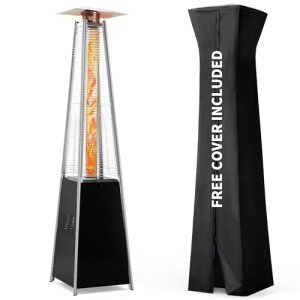10 Life Lessons We Can Take From Freestanding Stoves For Sale
Freestanding Stoves for Sale: The Ultimate Guide
Freestanding stoves, also known as standalone stoves, are an increasingly popular option for property owners wanting to enhance the heating efficiency and aesthetic appeal of their home. They are available in a myriad of designs, sizes, and fuel alternatives, supplying versatility to meet the varied requirements of customers. This post checks out various elements of freestanding stoves, including their benefits, types, and functions, together with a guide to buying the ideal stove.
What is a Freestanding Stove?
A freestanding range is a heating device that is not built into a wall or kitchen cabinetry. Instead, it stands separately in a room and can be placed in various places, making it a flexible heating service. These stoves can make use of different fuels, such as wood, gas, or pellets, and are developed to supply warmth while boosting the atmosphere of an area.
Benefits of Freestanding Stoves
Freestanding stoves are preferred for a number of factors:
- Heating Efficiency: Freestanding stoves can produce considerable heat output while being fuel-efficient.
- Visual Appeal: With various styles ranging from traditional to contemporary, they can be a focal point in any space.
- Installation Flexibility: They can be put in varied areas, permitting for easy combination into existing home layouts.
- Affordable: Many freestanding stoves are more economical to set up compared to built-in systems.
- Heat Distribution: They can successfully distribute heat through the convection process, warming up the surrounding area.
Types of Freestanding Stoves
Freestanding stoves come in different types based upon their fuel source, consisting of:
Type
Description
Wood Stoves
Usage traditional wood logs for fuel, providing a rustic appeal and an unique ambiance.
Gas Stoves
Run using gas or propane, providing convenient and controllable heating.
Pellet Stoves
Use compressed wood pellets as fuel, known for their efficiency and eco-friendliness.
Electric Stoves
Use electrical energy as a source of power, readily available in various designs, often featuring modern designs.
Key Features to Consider
When shopping for a freestanding range, numerous functions must be taken into account:
- Heat Output (BTUs): Consider the size of the area you desire to heat and choose a range with a suitable BTU score.
- Size and Design: Ensure the range fits the space and matches the room's design.
- Fuel Type: Decide on the most convenient and cost-effective fuel type for your home.
- Efficiency Ratings: Look for the range's efficiency ratings (like EPA certification for wood stoves) to ensure you're making an environmentally friendly option.
- Safety Features: Consider models with security functions such as auto shut-off, heat resistant glass, or low-clearance choices.
Purchasing a Freestanding Stove
When considering buying a freestanding range, it is vital to assess a number of important aspects to guarantee you invest carefully:
1. Spending plan
Setting a clear budget is vital when going shopping for a freestanding stove. Rates can vary commonly based upon the type, brand, and functions:
- Basic Models: ₤ 800 – ₤ 1,500
- Mid-Range Models: ₤ 1,500 – ₤ 3,000
- High-End Models: ₤ 3,000 – ₤ 6,000+
2. Research Brands and Models
Comprehensive research can assist you uncover various alternatives in the market. Some noteworthy brands in the freestanding range market consist of:
- Jøtul
- Quadrafire
- Regency
- Lopi
- Harman
3. Consult Reviews
Read customer evaluations and professional scores online to acquire insights into the performance and dependability of various models.
4. Regional Regulations
Examine regional building regulations and policies relating to stove setup, specifically for wood and gas stoves, to ensure compliance.
5. Installation
Think about expert setup, particularly for gas or wood models, as they frequently need special ventilation or flue systems.
Frequently Asked Questions About Freestanding Stoves
1. Are freestanding stoves safe to utilize?
Yes, when effectively set up and preserved, freestanding stoves are safe. However, Best Fireplace to follow the maker's standards and local codes.
2. How do I keep my freestanding stove?
Routine maintenance includes cleaning up the flue or chimney, looking for obstructions, and guaranteeing all elements are functioning correctly. Annual evaluations by a qualified professional are recommended.
3. Can I utilize a freestanding range as a main heating source?
Yes, lots of house owners use freestanding stoves as primary heating sources, especially in locations where traditional heating might be restricted.
4. Are freestanding stoves energy-efficient?
Many more recent models are developed for high efficiency, offering better heat retention and lower emissions compared to older designs.
5. What is the typical life expectancy of a freestanding stove?
With correct maintenance, the typical lifespan of a high-quality freestanding range can be around 15 to 20 years.
Freestanding stoves are a practical and trendy option for heating homes. By understanding the various types, benefits, and includes available, house owners can make informed choices that suit their preferences and heating requirements. Whether going with a wood, gas, pellet, or electric stove, investing in a quality model will provide warmth, ambiance, and satisfaction for lots of years to come.
